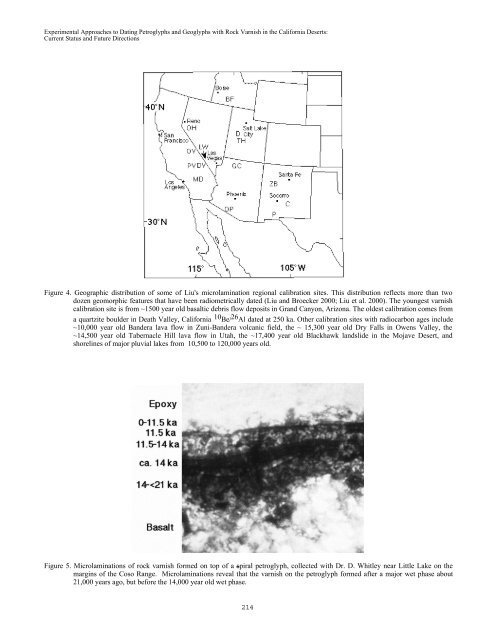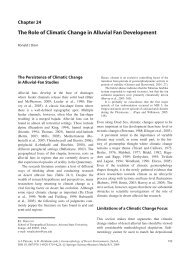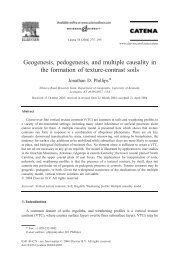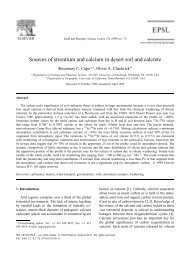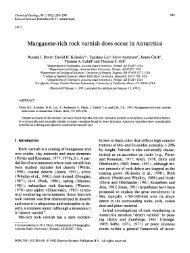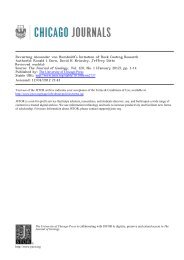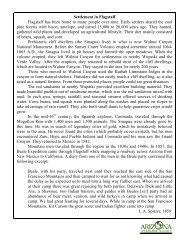Dorn, R. 2004. Experimental approaches to dating petroglyphs
Dorn, R. 2004. Experimental approaches to dating petroglyphs
Dorn, R. 2004. Experimental approaches to dating petroglyphs
Create successful ePaper yourself
Turn your PDF publications into a flip-book with our unique Google optimized e-Paper software.
<strong>Experimental</strong> Approaches <strong>to</strong> Dating Petroglyphs and Geoglyphs with Rock Varnish in the California Deserts:<br />
Current Status and Future Directions<br />
Figure 4. Geographic distribution of some of Liu's microlamination regional calibration sites. This distribution reflects more than two<br />
dozen geomorphic features that have been radiometrically dated (Liu and Broecker 2000; Liu et al. 2000). The youngest varnish<br />
calibration site is from ~1500 year old basaltic debris flow deposits in Grand Canyon, Arizona. The oldest calibration comes from<br />
a quartzite boulder in Death Valley, California 10 Be/ 26 Al dated at 250 ka. Other calibration sites with radiocarbon ages include<br />
~10,000 year old Bandera lava flow in Zuni-Bandera volcanic field, the ~ 15,300 year old Dry Falls in Owens Valley, the<br />
~14,500 year old Tabernacle Hill lava flow in Utah, the ~17,400 year old Blackhawk landslide in the Mojave Desert, and<br />
shorelines of major pluvial lakes from 10,500 <strong>to</strong> 120,000 years old.<br />
Figure 5. Microlaminations of rock varnish formed on <strong>to</strong>p of a spiral petroglyph, collected with Dr. D. Whitley near Little Lake on the<br />
margins of the Coso Range. Microlaminations reveal that the varnish on the petroglyph formed after a major wet phase about<br />
21,000 years ago, but before the 14,000 year old wet phase.<br />
214


